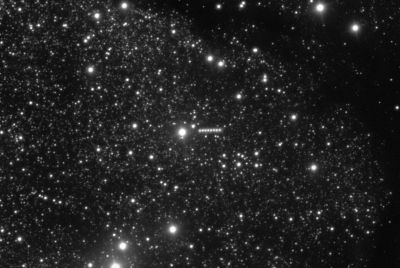Brian Cox Explains Why Comet 3I/ATLAS Is 'A Message from a Dead World'
Cox stated the comet will circle the Sun before disappearing once more into the galaxy

Brian Cox has once again turned our gaze towards the cosmos, but this time, the celebrated physicist isn't just talking about distant stars. He's focusing on an icy, interstellar traveller – Comet 3I/ATLAS – which he describes with a chilling, poetic phrase: 'A message from a dead world'.
This unique object has captured Cox's imagination, and its incredible journey reveals much about the vast, ancient history of the universe.
A Soothing Voice Amidst the Cosmic Storm
In a clip shared by X user Astronomy Vibes (@AstronomyVibes), Professor Cox addressed the flurry of online theories suggesting the interstellar visitor was artificial or extraterrestrial. He calmly dismissed these beliefs, clearly explaining that Comet 3I/ATLAS is 'a completely natural object, made of carbon dioxide, water ice, and cosmic dust'.
He stated, 'Just to be clear — despite the recent noise online — Comet 3I/ATLAS is a completely natural object. Its orbit is exactly as expected — it will swing around the Sun and then drift off once more into the galaxy'.
Just to be clear - given recent drivel on line - Comet 3I/Atlas is a comet, made of carbon dioxide and water ices and bits of other stuff. It is entirely natural in origin, its orbit is as expected and it will whizz around the sun and then disappear off into the galaxy again. If…
— Brian Cox (@ProfBrianCox) October 29, 2025
Cox next focused on the comet's profound, poetic meaning, contemplating a distant time when a different society might observe the same cosmic wanderer.
'If, in some far future, it passes another inhabited solar system, I hope those beings will see it for what it truly is — a visitor from another star, a pristine remnant of a long-dead world, just passing through', he said, concluding, 'Isn't that wonderful enough?'
What Makes 3I/ATLAS So Extraordinary
Comet 3I/ATLAS is only the third known interstellar object ever observed traversing our solar system, arriving after 'Oumuamua in 2017 and Comet 2I/Borisov in 2019. The '3I' in its designation signifies its interstellar status — it's a visitor that originated from a different star system outside our own.
According to The Times of India, the comet might be as old as 7.5 billion years, which makes it older than the Sun. Researchers believe it contains matter that existed before our solar system formed, essentially functioning as a 'time capsule from the ancient cosmos'.
The publication cites astronomers who believe 3I/ATLAS is a remnant of a planet that could have formed near a different sun before being hurled into the interstellar void — a notion that complements Cox's depiction of the object as a 'remnant of a dead world'.
A Journey Spanning the Galaxy
Figures from both NASA and the European Space Agency imply that 3I/ATLAS has been on the move for billions of years, drifting between distant suns since a time before our planet was even formed. The comet's path confirms its origin outside our system — it came into the solar system at great speed and will disappear forever once it passes the Sun.
The comet's transit offers scientists a crucial opportunity to analyse the chemical composition of matter that originated in other star systems. With advancements in telescope technology, researchers anticipate finding more of these cosmic travellers in the years ahead.
They note that each discovery will help unlock the secrets of how planets and comets come together across the galaxy.
Science Over Sensation
Cox's calm assessment stands in stark contrast to the sensational stories that frequently dominate social media discussions of astronomical events. His statement serves as a reminder of the inherent marvel of natural science — that an object can be both perfectly normal and absolutely extraordinary at the same time.
For him, the beauty lies not in imagined alien artefacts but in the cosmic story written in ice and dust. The notion that 3I/ATLAS may be a relic from a planetary system long vanished — and that it continues its silent voyage through the galaxy — is, in his words, 'wonderful enough'.
© Copyright IBTimes 2025. All rights reserved.






















